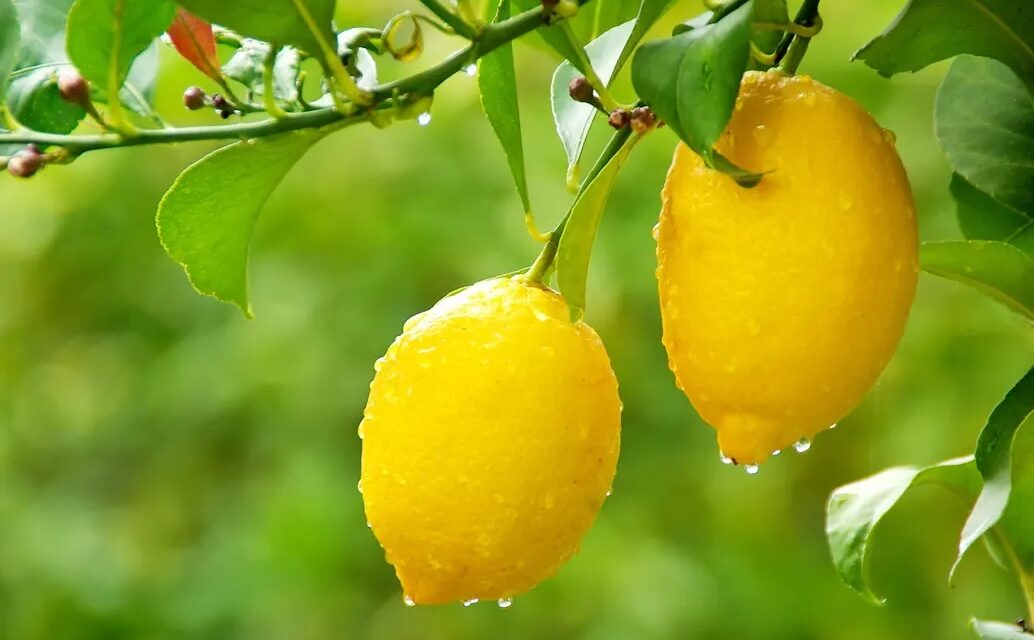Fruit trees can be grown in every climate zone in the United States, but knowing the right tree for your zone is important to its survival, maturity and fruit yield. Knowing your climate or hardiness zone will help you choose plants and trees that will thrive in the right growing environment, allowing you to enjoy a bountiful harvest year after year.
The old farmer’s rule of “only plant fruit trees in months that contain the letter ‘R’ ” can be broken if the weather has been unseasonably cool and the month of May is still mild enough to produce a few cool nights.
The idea behind the farmer’s adage is that summer months, with their higher temperatures and dry air, can stress saplings due to lack of moisture in the ground and in the air.
If you are still concerned about the lateness of the planting season, choose containerized fruit trees, as they will suffer less shock during a May or June transfer planting and will acclimate to their new environment faster if well-watered during the first two months.
Table of Contents
- What are Climate Zones?
- How to Identify Your Climate Zone
- Best Fruit Trees by Climate Zone
- Fruit Tree Resources
Also see:
What are Climate Zones?
The USDA (U.S. Department of Agriculture) determined that the country is divided into 13 growing zones numbered 1-13, with each having an “A” and “B” five degree subzone. The zones are based on the average minimum winter temperature and divided into 10-degree zones, by degrees Fahrenheit and degrees Centigrade/Celsius, and helps to determine how well a particular plant or tree will survive cold temperatures.
The map is maintained and updated every few years as average temperatures fluctuate and the zone information is kept current. So be sure to look at recent temperature data when choosing a fruit tree.
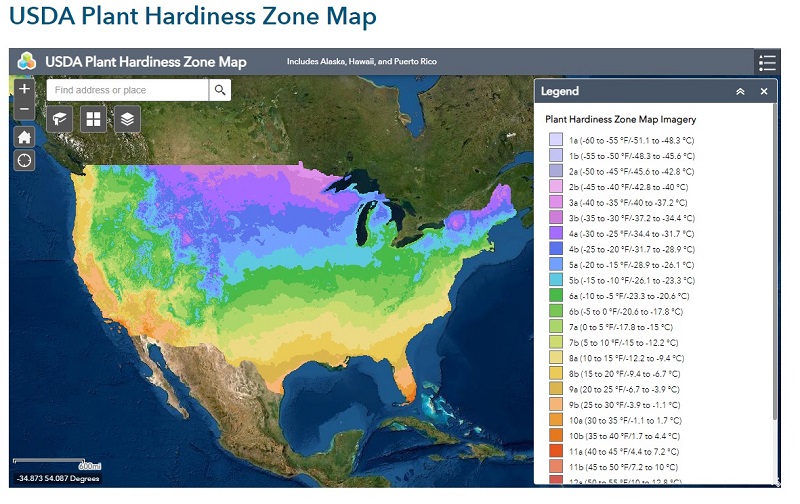
Image courtesy of USDA.
For example, Zone 1 covers winter temperatures that average -60 to -50 F or-51.1 to -45.6 C. Zone 1 is then subdivided into Zone 1a (-60 to -55F or -51.1 to -48.3C) and Zone 1b (-55 to -50 F or -48.3 to -45.6 C), which provides a better layer of granularity for gardeners to capture variances in microclimates, right down to the actual parcel of land you own. When choosing plants or trees it is important to know your planting or hardiness zone, and even better to know your planting sub zone.
Climate zones, also known as hardiness zones, or growing zones, are the standard by which seasoned gardeners and growers can determine which plants and trees are likely to thrive and survive the coldest months in that particular location.
Although you can plant trees and plants in a lower zone that are intended for a higher zone, it is quite a bit of work to maintain the proper temperature and climatic conditions for the roots, leaves, limbs and blossoms each year for the tree to be successful.
How to Identify Your Climate Zone
Knowing your exact growing zone is important to determine what can and cannot endure the average temperatures for your climatic region. Although it is possible to grow almost any tree or plant anywhere under controlled conditions, the truth is the tree will never reach its full maturity, if not planted in the earth and allowed to grow freely without the encumbrances of containers or greenhouse roofs.
To determine your planting zone by either exact address or zip code visit the USDA Planta Hardiness Zone Map.
Best Fruit Trees by Climate Zone
- Best Fruit Trees for Zone 1
- Best Fruit Trees for Zone 2
- Best Fruit Trees for Zone 3
- Best Fruit Trees for Zone 4
- Best Fruit Trees for Zones 5-8
- Best Fruit Trees for Zone 7
- Best Fruit Trees for Zones 8-11
- Best Fruit Trees for Zones 12-13
There is nothing better than homegrown fruit and vegetables. The freshness, taste and, of course, the cost are unparalleled to anything you will find in your local supermarket. There is also that added plus of a sense of pride of enjoying something you have grown with your own labor.
Fortunately, all climate zones in the US can accommodate fruit producing trees, but not all fruit trees can be grown in all climate zones. Knowing which fruit trees will thrive, mature and bear fruit in your particular zone is imperative to being realistic about the mango or avocado tree that will never grow due to being in the wrong hardiness zone.
Best Fruit Trees for Zone 1
The coldest of the USDA hardiness zones, Zone 1 trees are still able to bear fruit but the varieties are limited. Zone 1 plants are tough, hardy and adaptable to extreme weather conditions. Due to early frosts during the flowering period, some Zone 1 trees may not have a long enough period to establish themselves and blossoms may freeze and fall off.
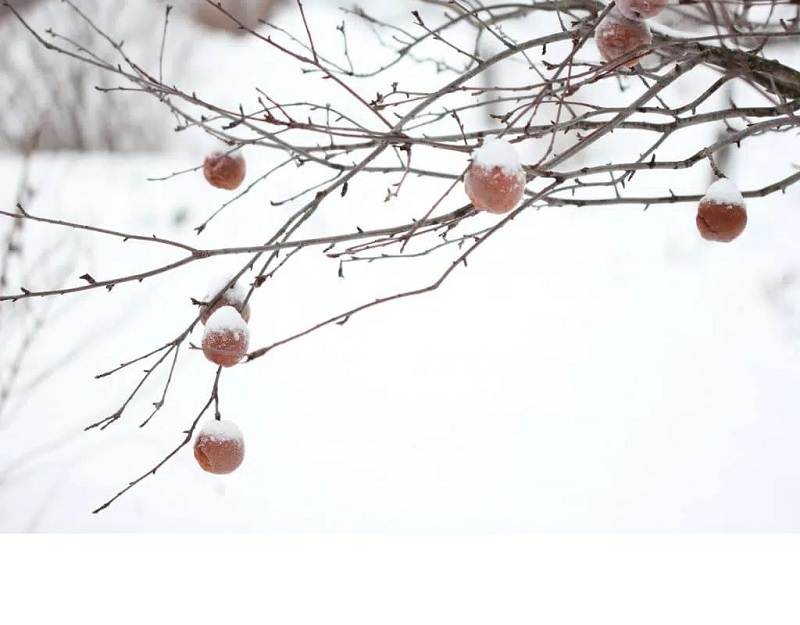
A hardy Apple Tree from Hardy Fruit Tree Nursery.
However, very hardy trees such as varieties of apples, are very forgiving to low temperatures and the occasional sudden frost. The 9-22 End Apple tree is an excellent example of a hardy tree with a 100-year average life span that should produce an abundant, edible crop year after year.
Best Fruit Trees for Zone 2
Apple trees are again one of the hardiest of all fruit trees and often grow where no other fruit tree can survive. Although Zone 2’s average winter minimum temperature spans from -50 to -40 F or -45.6 to -40 C, there are a number of apple varieties that can survive these frigid winters.
- September Ruby Apple
- Crab Apple
- TreasuRed Columnar Apple
- Prairie Sensation Apple
- Ivanovka Plum
- Norkent Apple
Best Fruit Trees for Zone 3
At the risk of repeating ourselves, all previous zone fruit trees will grow in subsequent zones. In other words, trees that are hardy in Zone 2 will grow in zone 3, 4, 5 and so on. Our list is to direct you to the minimum zone that a particular fruit tree can tolerate, so suffice it to say, a Zone 3, -30 to -40F or – 40 to -34.4 C, tree cannot grow in Zone 1.
- Minnesota 1734 Apple
- Black Currant
- Superior Plum
- Blue Highbush Cranberry
- Westcot Apricot
- Golden Spice Pear
Best Fruit Trees for Zone 4
Although mainly confined to northern geographic regions of the US, such as North Dakota, Minnesota, Wisconsin and parts of Maine, Zone 4 can still produce a variety of fruit such as Plums, Pears, Cranberries and Currents.
Despite winters which average in the -30 to -20 F or -34.4 to -20 C temperatures, these varieties have adapted and acclimated to the geography and can withstand the harsh winter months.
Best Fruit Trees for Zones 5–8
Perhaps the largest swath of states across the middle of America is the heart of Zones 5-8 where an increasing variety of fruit trees can be found. Average winter temperatures from -20 to 20 F or -28.9 to -6.7 C provide enough of a cold period to produce apples, cherries figs and peaches.
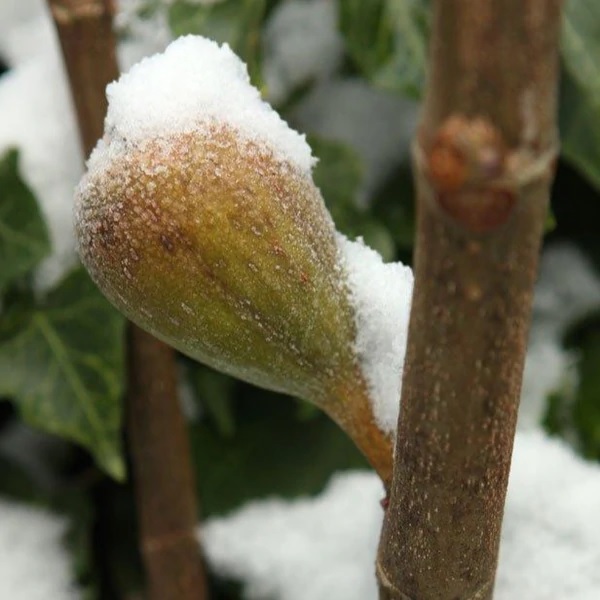
Chicago Hardy Fig Tree proving its hardiness in the cold from PlantingTree.com.
- Chicago Hardy Fig
- Granny Smith Apple
- Elbert Peach
- Santa Rosa Plum
- Bing Cherry
- Rainer Cherry
- Black Tartarian Cherry
- Red Haven Peach
Best Fruit Trees for Zone 7
Although many of Zones 5-8’s fruit trees can be planted in Zone 7, a few fig and persimmon trees are more acclimated to Zone 7’s average winter temperatures of 0 to 10 F or -17.8 -12.2 C.
Best Fruit Trees for Zones 8-11
Zones 8-11 comprise the southern and western edge states, such as Texas, Louisiana, Alabama, Florida, parts of California and Oregon. With average winter temperature ranging from 10 to 50 F or -12.2 to 10 C, it is the perfect climate for citrus varieties and Mediterranean olive and Avocado trees.
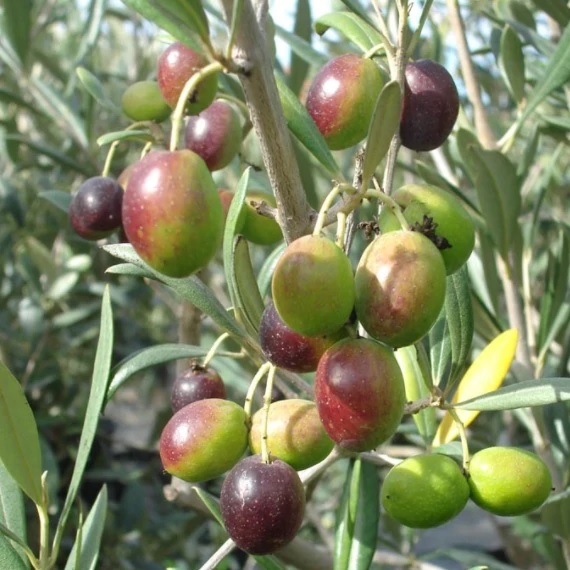
Arbquina Olive Tree with olives on the branch from PlantingTree.com.
- Key Lime
- Meyer Lemon
- Dwarf Cavendish Banana
- Arbequina Olive Tree
- Owari Satsuma Mandarin
- Navel Orange
- Blood Orange
- Cold Hardy Avocado
- Ruby Red Grapefruit
- Ice Cream Banana
- Persian Lime
Best Fruit Trees for Zone 9
Specific to Zone 9, with average winter temperatures of 20 to 30 F or -6.7 to -1.1 C, are Mango, Passion Fruit and the Variegated Eureka Lemon tree.
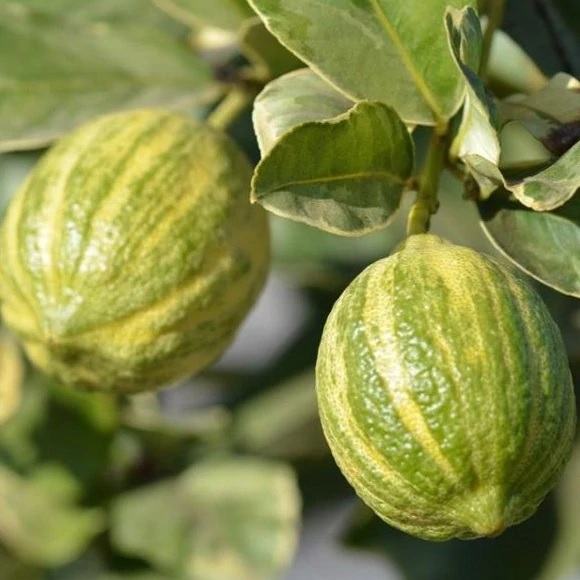
Variegated Eureka Lemons on the branch from PlantingTree.com.
Best Fruit Trees for Zones 12-13
Zone 12 is characteristically very hot with average winter temperatures 50 to 60 F or 10 to 12.8 C. Fruit trees and plants in this category are best suited for tropical conditions, such as Hawaii and Puerto Rico and climates close to the equator. The fruit trees in this category are more popular in Asia and South America.
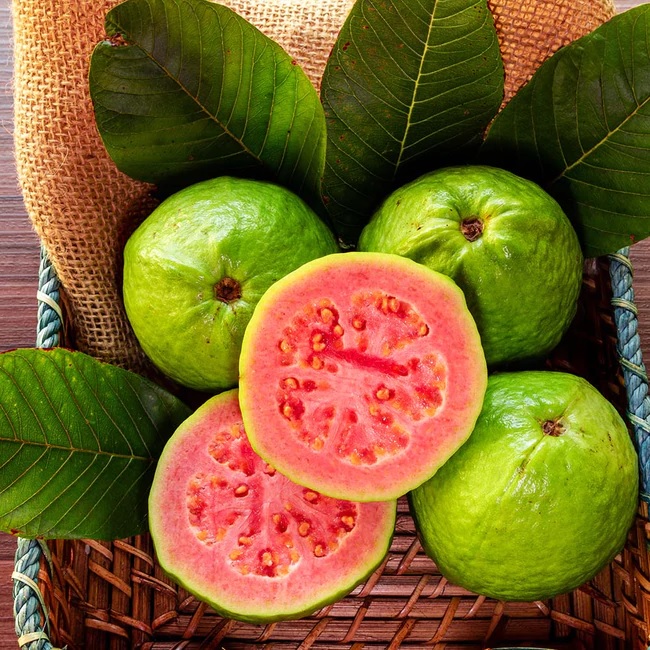
Large Ruby Supreme Guava fruit cut open from FastGrowingTrees.com.
Fruit Tree Resources

Fruit Picking Baskets from Peterboro.
- Peterboro Pick-Your-Own Fruit & Vegetable Basket
- Eversprout 13-Foot Fruit Picker
- USDA Plant Hardiness Zone Map
- Tropical Plantae: Tropical Fruit Trees for Sale
- Fruitscapes: Mangos & Tropical Fruit Trees for Sale
- Sleepy Lizard Avocado Farm
- Fruit Trees Available at Home Depot
- Fruit Trees Available on Amazon
- Arbor Day Foundation Store
- Arbor Day Foundation Fruit & Nut Trees for Sale
Recommended Lawn Care & Gardening Articles
- Uber Apps for Lawn Care & Outdoor Services
- Current State of Landscaping Technology for Your Home
- Tempted to Install Artificial Grass? Not So Fast!
- Best Garden & Landscaping Shows Now on Amazon Prime
| Purgula is reader-supported. When you click on links to other sites from our website, we may earn affiliate commissions, at no cost to you. If you find our content to be helpful, this is an easy way for you to support our mission. Thanks! Learn more. |

